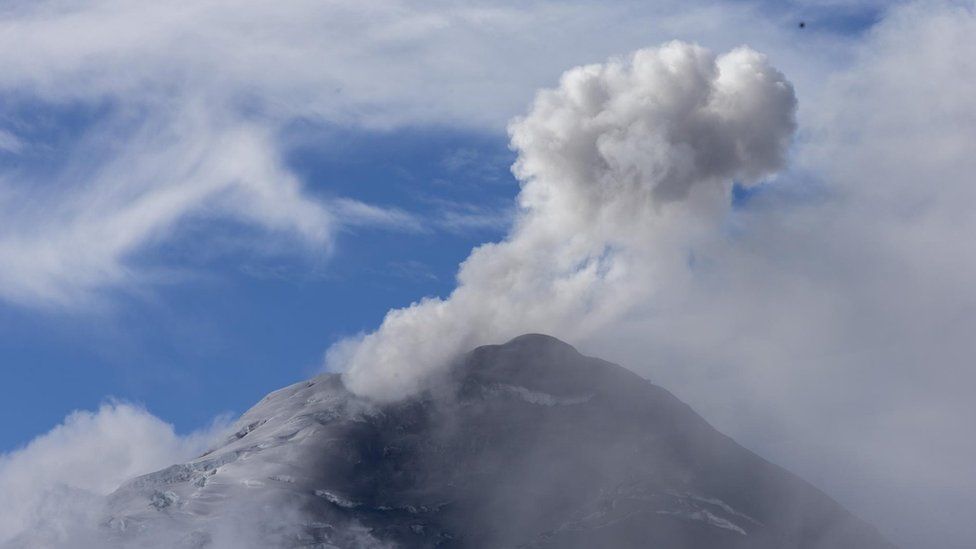ARTICLE AD BOX
 Image source, EPA
Image source, EPA
Cotopaxi is one of the most active volcanoes in South America
By Vanessa Buschschlüter
BBC News
Ecuador's Cotopaxi volcano has been emitting a plume of gas and vapour which over the weekend reached a height of 1.8km (1.1 miles) above its crater.
Ash from the volcano has fallen south of the capital, Quito, and in surrounding valleys, according to the Ecuadoran Geophysical Institute.
The volcano has been emitting gases since October but the plume rising from it this weekend was unusually high.
Cotopaxi is one of South America's most active stratovolcanoes.
Ecuador's Geophysics Institute tweeted a photo taken from a drone of the plume of vapour rising from Cotopaxi's snow-capped peak.
The plume could be seen from different points in Quito but seismologists said it was mainly made up of gas and only contained low amounts of ash.
Cotopaxi has erupted dozens of times. In August 2015, it spewed large amounts of ash after a period of relative calm lasting for 70 years.
One of the most significant eruptions happened in 1877 when lahars - volcanic mudflows - travelled up to 100km (60 miles) from its crater and destroyed the town of Latacunga.
But even before 1877, Cotopaxi and its eruptions - while feared by those living nearby - were an inspiration for artists such as US landscape painter Frederic Edwin Church.
Image source, Getty Images
Image caption,Frederic Edwin Church's painted the Cotopaxi in the 1860s

 1 year ago
18
1 year ago
18








 English (US)
English (US)